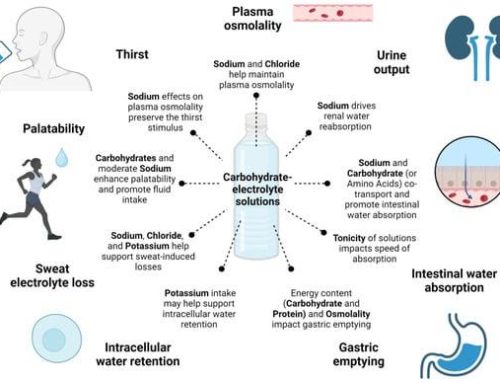Are you tired of hitting the gym, lifting heavy weights, and seeing minimal progress in your gains? Don’t blame it on your genetics or the gym equipment just yet. Maybe it’s time to address the pink elephant in the room – your pre-lift stretching routine. Yes, that’s right. We know it’s tempting to skip those stretches and jump right into your reps like a maniac, but trust us, it’s time to get flexible and maximize those gains. So, grab your foam roller, yoga mat, and put on your stretchy pants because we’re about to dive into the world of pre-lift stretching.
Contents
- 1 1. The Importance of Pre-Lift Stretching for Muscle Gains
- 2 2. Maximizing Your Workouts with Proper Pre-Lift Stretching Techniques
- 3 3. Pre-Lift Stretching: A Step-by-Step Guide for Optimal Performance
- 4 4. The Science Behind Stretching: How It Improves Your Lifts
- 5 5. Common Mistakes to Avoid When Stretching Before Your Workouts
- 6 Stretch Like a Boss for Maximum Gains
1. The Importance of Pre-Lift Stretching for Muscle Gains
Pre-Lift Stretching is No Joke
Listen up folks, if you’re not taking your pre-lift stretching seriously, you’re missing out on some serious muscle gains. Yes, I said muscle gains. You know that feeling when you stretch and your muscles scream out in joy? That’s because they’re excited to get that blood flowing and that oxygen pumping, ready to lift like a champ. Don’t leave your muscles hanging, give ’em some love before the main event.
- Stretching reduces muscle soreness: Ever had trouble walking up stairs after leg day? Yeah, me too. Stretching before your workout can help reduce muscle soreness, making it easier to walk up those stairs with your head held high.
- Improved flexibility means improved range of motion: Being able to move your body through a full range of motion means your muscles are working harder and smarter. Stretching can help improve your flexibility, leading to better performance and less risk of injury.
- Improved blood flow means improved performance: Let’s get scientific for a second. Stretching increases blood flow to your muscles, providing them with the oxygen and nutrients they need to perform at their best. More blood flow = more energy = more gains.
At the end of the day, pre-lift stretching shouldn’t be seen as a chore, but as a way to show your muscles some love before putting them to work. So the next time you’re tempted to skip stretching and head straight for the bench press, think again. Your muscles will thank you.

2. Maximizing Your Workouts with Proper Pre-Lift Stretching Techniques
First off, let’s get one thing straight – stretching is not just for ballerinas and yogis. Whether you’re a seasoned pro or just starting out, a proper pre-lift stretching routine can mean the difference between hitting your PR or being sidelined with an injury. So settle in, grab your foam roller, and let’s get to work.
But before you start churning out some half-hearted toe-touches, let’s talk about the types of stretches you should be doing. When it comes to lifting weights, it’s all about dynamic stretching. This means movements that engage your muscles while gradually increasing your range of motion. Think lunges, leg swings, and arm circles. Not only will this type of stretching prevent injury, it can also help you lift more weight, since your muscles are warmed up and ready to go.
Now, let’s talk about what NOT to do. No, I’m not talking about the guy who grunts like a wildebeest on the bench press (although, for the love of all that is holy, can we please banish that behavior to the depths of gym purgatory?). I’m talking about static stretching. For those of you who don’t speak gym rat, static stretching means holding a stretch for an extended period of time. While this type of stretching is great for cooldowns, it can actually hinder your performance if done before your lift. So save the toe-touches for after your workout, and focus on getting that blood flowing with some dynamic stretching instead.
In summary, a proper pre-lift stretching routine is vital for maximizing your workouts. Stick to dynamic stretches that engage your muscles and gradually increase your range of motion, and save the static stretches for after your lift. And if you’re still feeling uncertain, just remember – nobody ever regretted taking a few extra minutes to stretch. But if you skip stretching altogether, you might end up regretting it for a while…and nobody wants to be sidelined by an injury. Stay safe, stay stretchy, and lift on.
3. Pre-Lift Stretching: A Step-by-Step Guide for Optimal Performance
Paragraph #1:
Ah yes, stretching before a heavy lift. The one thing we all know we should do, but often skip in favor of scrolling through Instagram for five minutes. But if you’re serious about getting the most out of your workout, you better stretch it out first. Lucky for you, I have a step-by-step guide that will have you limbered up in no time.
Unnumbered List:
– Start with a five-minute cardio warm-up, to get the blood flowing and your body primed for stretching.
– Focus on areas that will be heavily used during your upcoming lift. For instance, if you’re planning on deadlifting, you’ll want to give your hamstrings and lower back some extra attention.
– Hold each stretch for at least 30 seconds, and remember to breathe deeply through each movement.
Paragraph #2:
But enough talk – let’s get stretching! First up, let’s tackle those hamstrings. Stand up straight with your feet shoulder-width apart. Slowly bend forward at the waist, keeping your legs as straight as possible. Reach for your toes, or as close as you can get without feeling any pain. Hold for 30 seconds, then slowly roll back up to a standing position.
Unnumbered List:
– If you can’t reach your toes, don’t worry – just go as far as you can without pushing yourself too far.
– Don’t bounce when you’re stretching. This can do more harm than good.
– If you feel any sharp pain, stop immediately. You don’t want to injure yourself before you even start your lift.
Paragraph #3:
Now that your hamstrings are warmed up, let’s move on to your lower back. Lie down on your back with your knees bent and your feet flat on the floor. Slowly lift your hips off the ground, squeezing your glutes and lower back muscles. Hold for 30 seconds, then lower back down. Congratulations – you’ve just performed a basic bridge!
Unnumbered List:
– Bridges are a great way to wake up your lower back and glutes before heavy lifting.
– If you’re feeling particularly flexible, try straightening one leg at a time while you’re in the raised position.
– And don’t forget to give yourself a bit of a pat on the back for taking the time to stretch. Hey, you may not be able to touch your toes quite yet, but you’re well on your way.
4. The Science Behind Stretching: How It Improves Your Lifts
When it comes to lifting, we’ve all experienced those moments where our muscles feel as tight as a budget wedding dress. That’s where stretching comes in, my friends! Not only does it increase the range of motion in your joints, it also helps to activate the muscles you’re about to work. You wouldn’t just jump into a heated debate without warming up, would you?
So, what’s the science behind this magical movement we call stretching? Well, when you stretch, you’re increasing the blood flow to your muscles. This is like turning on the oven before you bake your delicious protein-packed muffins. The increased blood flow helps to bring more oxygen and nutrients to your muscles which in turn increases its ability to contract and relax effectively. It’s like a hydration station for your body!
Furthermore, stretching helps to maintain the integrity of your muscle fibers. Picture your muscles as a row of dominoes. If one is out of alignment, than the whole row is affected. The same can happen with your muscles. If they’re tight and not properly aligned, it can lead to muscle imbalances which can negatively affect your lifts. Stretching can prevent this from happening by keeping your muscles loosey-goosey and aligned. Time to say goodbye to being as stiff as a board!
5. Common Mistakes to Avoid When Stretching Before Your Workouts
Stretching before your workouts is crucial to warming up those muscles and getting ready for the burn. However, there are a few common mistakes that people tend to make while stretching. Let’s take a look at what those are, and avoid them like that one gym-goer who never wipes down the equipment after they use it.
- Skipping the warm-up altogether: Yeah, I get it. You’re a busy bee and don’t have time for all those fancy stretches. But, let me tell you something – not doing a warm-up before your workout is like baking a cake without preheating your oven. Sure, it might turn out okay, but it’s not going to be as easy and smooth as it could have been. Take the time to do a little pre-workout stretching, and your body will thank you.
- Stretching cold muscles: Ahh, yes. The classic mistake. You’re in a hurry to get started on your workout, so you skip the warm-up and go straight into stretching. Not only can this lead to injury, but your muscles are going to feel tight and resistant. Make sure to get your blood flowing with a light jog or jump rope for a few minutes before stretching.
- Overstretching: We’ve all been there. You’re feeling extra tight, so you push a little harder during your stretches, and before you know it, you’re on the floor in pain. Overstretching can lead to muscle strains, tears, and even worse – embarrassment. Take it easy and remember that stretching should feel rejuvenating, not like torture.
So, there you have it – a few common mistakes to avoid when stretching before your workouts. Remember, the key is to take it slow, warm up properly, and never underestimate the power of a good stretch.
Stretch Like a Boss for Maximum Gains
And there you have it folks! You now have all the information you need to stretch your way to an impressive six-pack and toned muscles. Remember, don’t be that guy who skips stretching and ends up pulling a muscle mid-lift – trust us, it’s not a pretty sight.
Stretching is not just a warm-up, it’s a lifestyle. Do it like a boss and you’ll see gains that will make even the grumpiest gym bros jealous. So remember, loosen up those hamstrings, scoop those obliques, and lock in those gains. Happy stretching!








Leave A Comment